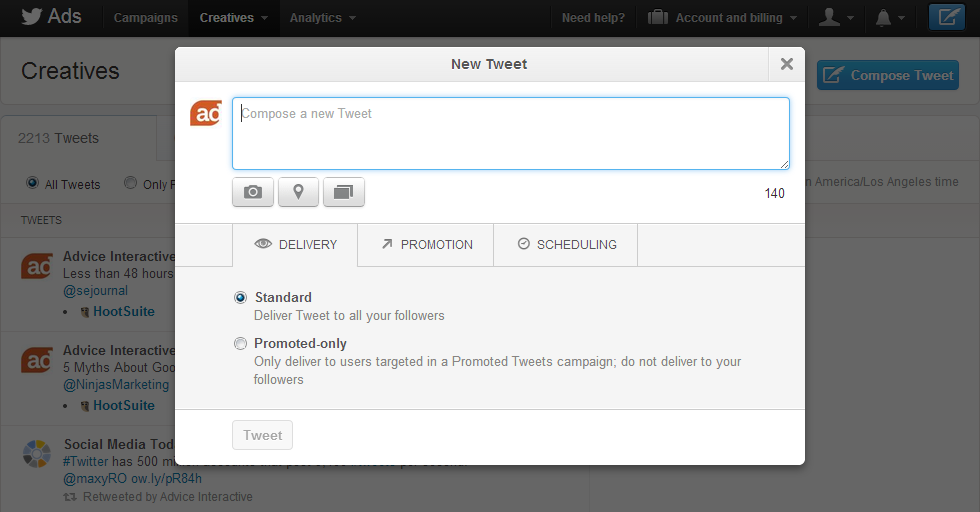It’s been a busy week in the world of Twitter. The company announced two major changes to various features this week: Direct Messages and Scheduled Tweets. Both changes present various opportunities and setbacks for both marketers and general users, and each are a big step toward the company’s IPO filing scheduled for next month.
Direct Messages No Longer Require Reciprocal Following

This isn’t exactly a new update to Twitter, since verified users have been able to opt-in since it was announced in 2011. However, this week, Twitter revealed that the option to receive messages from any follower without the requirement of reciprocal follow (they follow you and you follow them back) would roll out to all users throughout this week.
What This Change Means
For some, this is a welcome change. The process of attempting to contact someone privately in the past required a lot of maneuvering and waiting. Now, as long as the person you need to contact has opted in to this feature, you can contact them as soon as you follow them.
But that’s a dangerous thought, isn’t it? Users should think carefully about opting in, since this new feature seems an obvious roadway for spammers and hackers to easily contact their intended targets.
Twitter’s Spam Problem
It’s no secret that Twitter has a spam problem. Fake accounts pop up all the time, usually with the goal of spreading malware-laden links through Tweets or direct messages to unsuspecting targets. Once users click on these links, it sends out the same malware messages to their followers lists, and so on and so forth as long as people continue clicking the links.

This new change gives these bot accounts an easier way to send spam and malware in private and under the radar. Users may be more inclined to click on links that appear in their direct messages rather than as an @ notification, which is exactly what a spammer/hacker bot wants.
But this change also benefits another group of spammers—businesses. I’m not saying that all business or commercial ventures are spammers, but with this new change, I fear a business’s desire to want to get a message in front of a potential customer will outweigh the consequences they perceive about spamming. Just look at how lucrative similar spammers are on Facebook.
Twitter’s Reply?
Not even a full 24 hours after releasing the update to direct messages, users began reporting problems with sharing hyperlinks in direct messages. Is it a bug? Is it an intentional pull on Twitter’s part due to an influx of spam? Twitter has not released an official statement on the matter, but they have updated their Help Center page on “Posting or deleting direct messages” to say that they are aware of the problem. However, no statements about when a fix, if any, will be implemented has been released.
Scheduled Tweets for Ad Users
Facebook added a scheduling option to its interface in 2012, and now Twitter users will be able to do the same. In the past, users, brands, and businesses have relied on third-party platforms like Hootsuite, Buffer, or Sprout Social to schedule, send, and analyze their Tweets.

This new feature is available only to Twitter Ads users at this time, but anyone can sign up for an Ads account at ads.twitter.com.
What This Change Means
Twitter is now moving to become an all-in-one social media platform. The company already released its in-depth analytics dashboard to users back in June; when combined with this new scheduling functionality, the Ads dashboard becomes a robust real-time marketing solution. Brands will now be able to schedule, send, and analyze any Tweet they send through the Ads dashboard with almost zero waiting time.
Is this the end of third-party platforms? Probably not, since they offer an easy approach to scheduling posts across multiple social media sites—not to mention their social listening capabilities. So don’t deactivate your social media tools and accounts just yet—there’s still a lot that needs to happen before Twitter truly becomes an all-in-one solution for your brand’s needs.


